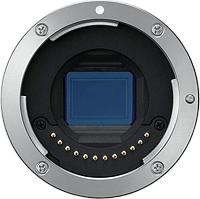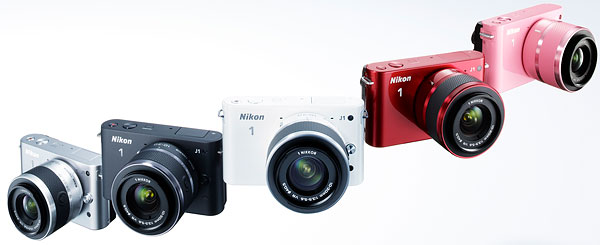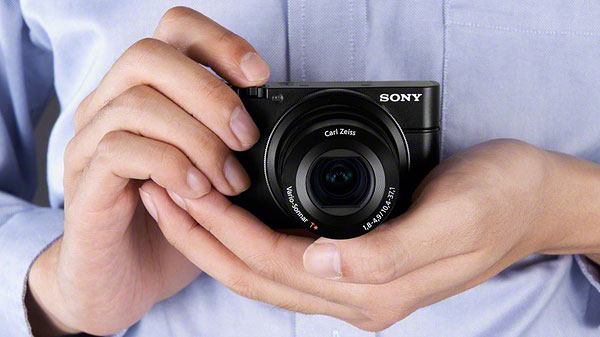Nikon 1-series, Sony RX100 face more competition as Aptina sensor goes mainstream
posted Monday, September 24, 2012 at 9:22 PM EDT

An announcement from sensor provider Aptina last week suggests that there could be competition on the horizon for Nikon's 1-series cameras, as well as Sony's Cyber-shot DSC-RX100 fixed-lens compact. Aptina has revealed that it is now shipping samples of its new AR1011HS image sensor, which would appear to be similar to the chip currently used in the Nikon V1, J1, and J2.
It's a little difficult to say how closely the new chip is related to that in Nikon's cameras, as the Japanese camera maker not surprisingly hasn't shared detailed specifications for its sensor. Indeed, even the supplier wasn't public knowledge until a Chipworks teardown late last year confirmed the 1-series cameras' sensor to be supplied by Aptina. However, the basics are a perfect match: just like that in the Nikon cameras, the new Aptina chip has 10 megapixel resolution, a 3.4 micron pixel pitch, and a 1-inch type form factor. (That's approximately a 16mm diagonal.)
The new Aptina chip uses DR-Pix technology, as we'd speculated Nikon's variant might in reviewing the Nikon V1 earlier this year. It also has a 24-lane readout interface, something we know to be true of the Nikon cameras' sensor from an interview we conducted last year with Masahiro Suzuki, General Manager of Nikon Corp.'s Research and Development Department.

The Nikon and Aptina sensors compare closely in terms of performance, as well. Both are exceptionally swift, allowing full-resolution shooting at a stunning 60 frames per second. Although the 1-series cameras don't offer video capture at greater than Full HD (1,080p; 1,920 x 1080 pixel) resolution with a rate of 60 fps, our friends at Digital Photography Review learned from Nikon that the sensor was capable of providing for 2K or even 4K video. Aptina also states that the new chip allows Quad High Definition capture, a synonym for 4K video. It further says that the chip provides for Full HD (1,080p; 1,920 x 1080 pixel) video capture at 120 fps, suggesting that it would be possible to engineer a 4x slow-motion function for 30fps Full HD video in a camera based on this chip, if sufficient processing power was available.
Where the Aptina chip certainly does differ from that in the Nikon cameras is that it lacks on-chip phase detection pixels, and so would be reliant on contrast-detection autofocus. With that said, the high readout speed would suggest that a camera based on the chip could provide pretty capable autofocus even if it lacked phase detection capability.
Comparison to Sony's sensor is a little more challenging. It's the same size, but little direct comparison can be made beyond that, without detailed specifications being available. Perhaps the best indication is from DxOMark's recent review of the RX100, which gave the edge to Sony's chip over that in the Nikon J1 in terms of image quality. The RX100 is significantly more limited in terms of its speed, offering a rate of 10 fps at full resolution with focus and exposure locked, but it's certainly possible that the sensor offers greater speed than is harnessed by the RX100's processor. Either way, though, Aptina's chip would likely offer greater competition to that in the RX100 than do existing premium compacts.

So when can we look forward to cameras based on the now more widely-available Aptina chip? Currently, only samples are available. Aptina says mass production is scheduled to start from the first quarter of next year, suggesting we could expect to see the first new products soon after the combined Consumer Electronics Show and Photo Marketing Association tradeshow next spring.
Alongside the new AR1011HS sensor, Aptina has also unveiled the AR1820HS, a 1/2.3-inch sensor with 18 megapixel resolution and a 1.25 micron pixel size. That chip allows full-res readout at 24 fps via an eight-lane interface.